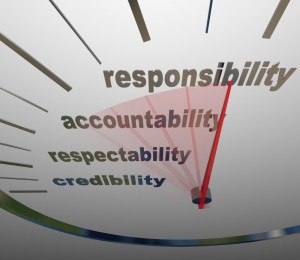“I think whether you’re having setbacks or not, the role of the leader is to always display a winning attitude”. – Colin Powell
A man approached a little league baseball game one afternoon. He asked a boy in the dugout what the score was. The boy responded, “Eighteen to nothing–we’re behind.”
“Boy,” said the spectator, “I’ll bet you’re discouraged.”
“Why should I be discouraged?” replied the little boy. “We haven’t even gotten up to bat yet!”
That humorous story is a reminder of the power of a positive attitude even when the odds are not in your favor. Having and maintaining a positive attitude in the workplace can be challenging even for the most optimistic person at times.
A study conducted by Root Inc., (http://bit.ly/1J2wkdq) the strategy execution consulting company reported on the findings of a survey by Kelton titled “America’s Workforce: A Revealing Account of What U.S. Employees Really Think About Today’s Workplace.”
Among the interesting finding, one statistic stood out – employees feel discouraged. More than half (54%) of employees have felt frustrated about work. To be sure, everyone faces times of discouragement and frustration at work. It’s normal. Adding to that frustration from the survey is the admission of only 38% who say that their manager has established an effective working relationship with them, or 40% who say that they don’t get the company’s vision or have never seen it. With findings like that, can you see how frustrations rise and attitudes can sour?
So what is a growing leader to do? Here are three tips for developing underdog attitudes that can help you become a top dog leader.
Take ownership
Your attitude – good or bad, is on you. You can play the blame game or you can, with underdog fortitude, step up and take responsibility for your attitude. That means saturating your mind with positive thoughts and surrounding yourself with positive people. It means being intentional about what you read, who you listen to, and guarding your emotions. You don’t live in a bubble and you will be exposed to the negative attitudes of others. But at the end of the day the only attitude you are responsible for is yours. Own it.
Go on offense
Top dog leaders take the offensive with underdog attitudes. No one should just idly sit by while those with bad attitudes wreak havoc and erode the culture within your organization. Going on offense is about exerting your positive influence like the little boy in the dugout at the baseball game. You might be down momentarily but you are not out. It’s not about denying reality with your head in the sand, but it is about charting your course and the mindset you will have going forward. When you are proactive with a positive attitude it can be contagious. Go on offense and set the tone.
Never give up
Keeping a positive outlook on life be it in your place of work or elsewhere can be challenging. Having a positive outlook and attitude may place you as the “odd man out” in some circles but it’s worth fighting for. You may feel overwhelmed by those circumstances but let me encourage you to never give up.
Joel Osteen said, “Choosing to be positive and having a grateful attitude is going to determine how you’re going to live your life.” And that’s ultimately the bottom line. When you embrace an underdog attitude is will ultimately carve out the type of life you are going to live.
If those around you have a bad attitude, don’t join in-take ownership of your own. When others choose a negative path and tone don’t join them – go on offense and set an example for others to emulate. No matter how hard it is to keep your attitude positive, no matter how bad things are around you- don’t ever give up!
What do you say?
© 2015 Doug Dickerson









